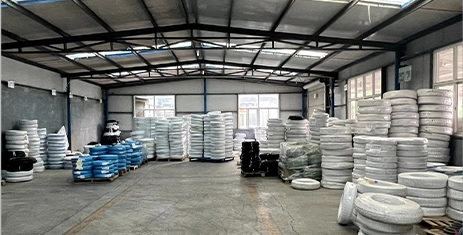R134A Refrigerant Charging Hose Kit for Efficient Cooling System Maintenance and Repair
Understanding R134A Refrigerant Charging Hose Kits
Refrigerants play a pivotal role in the cooling systems of various appliances, from car air conditioning units to household refrigerators. One commonly used refrigerant is R134A, also referred to as HFC-134a. Due to its efficiency and lower environmental impact compared to older refrigerants like R12, R134A has become the preferred choice for many systems. However, proper handling, including charging, is crucial to maintain optimal performance and comply with environmental regulations. This is where an R134A refrigerant charging hose kit comes into play.
What is an R134A Refrigerant Charging Hose Kit?
An R134A refrigerant charging hose kit is a specialized toolset designed to facilitate the process of adding or recovering refrigerant from a system. It typically includes a set of hoses, manifold gauges, and various fittings. The primary function of this kit is to enable technicians and DIY enthusiasts to monitor the pressure of the refrigerant and ensure the system is charged to the manufacturer’s specifications.
Key Components of a Charging Hose Kit
1. Hoses Most kits come with color-coded hoses (usually blue for the low-pressure side and red for the high-pressure side) that allow users to easily distinguish between the two systems. These hoses are built to withstand high pressures and are equipped with quick-connect fittings for convenience.
2. Manifold Gauges The manifold gauges are essential for monitoring the pressure levels in the system. They provide real-time readings, which help in diagnosing issues within the refrigerant cycle and ensuring that the system operates within the correct parameters.
3. Fittings and Adapters Different systems may require specific fittings, and many kits include a variety of adapters to ensure compatibility with different equipment. This flexibility is crucial for ensuring that the charging process can be completed without hassles.
How to Use an R134A Refrigerant Charging Hose Kit
r134a refrigerant charging hose kit

Using an R134A charging hose kit involves a few essential steps
1. Safety Precautions Before starting, wear protective gear such as gloves and safety goggles, as refrigerants can be harmful. Ensure the work area is well-ventilated and free from flammable materials.
2. Connect the Hoses Identify the low-pressure and high-pressure ports on the system. Connect the blue hose to the low-pressure port and the red hose to the high-pressure port. Ensure these connections are secure but not over-tightened.
3. Monitor Pressure Levels Start the system and allow it to reach operating conditions. Use the manifold gauges to monitor the pressures; these readings will indicate whether the system is undercharged, overcharged, or operating normally.
4. Add Refrigerant If the system is low on R134A, connect the refrigerant canister to the center port of the manifold. Open the valve on the canister and allow the refrigerant to flow into the system while ensuring the low-pressure gauge reading is within the recommended range.
5. Final Check Once charged, disconnect the hoses in reverse order, starting with the refrigerant canister. Check for leaks and ensure all fittings are secured.
Importance of Proper Refrigerant Charging
Correctly charging a refrigerant system is crucial for its efficiency and longevity. Undercharging can lead to inadequate cooling, while overcharging may cause increased pressure, resulting in potential system failures. Thus, understanding how to utilize an R134A refrigerant charging hose kit is essential for both professionals and DIY enthusiasts aiming to maintain their refrigeration systems effectively.
In conclusion, an R134A refrigerant charging hose kit is an invaluable tool for anyone working with refrigeration systems. With the right knowledge and tools, maintaining and optimizing system performance becomes a straightforward task, contributing to the longevity and efficiency of the equipment involved. Whether you’re a seasoned technician or a curious homeowner, mastering the use of these kits can enhance your understanding of HVAC systems while ensuring a comfortable and efficient environment.
-
Ultimate Spiral Protection for Hoses & CablesNewsJun.26,2025
-
The Ultimate Quick-Connect Solutions for Every NeedNewsJun.26,2025
-
SAE J1401 Brake Hose: Reliable Choice for Safe BrakingNewsJun.26,2025
-
Reliable J2064 A/C Hoses for Real-World Cooling NeedsNewsJun.26,2025
-
Heavy-Duty Sewer Jetting Hoses Built to LastNewsJun.26,2025
-
Fix Power Steering Tube Leaks Fast – Durable & Affordable SolutionNewsJun.26,2025

